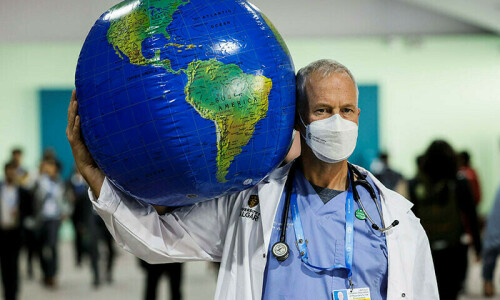TODAY is our human family’s first-ever International Day of the Girl.
This is a day to celebrate the fact that it is girls who will change the world; that the empowerment of girls holds the key to development and security for families, communities and societies worldwide.
It also recognises the discrimination and violence that girls disproportionately endure — and it is especially important that one of the cruellest hardships to befall girls, child marriage, should be the UN’s chosen theme for this inaugural day.
The marriage of adolescent girls, sometimes to much older men, sums up much of the harm, injustice and stolen potential that afflict so many girls around the world.
Ten million girls under the age of 18 are married off, every year, with little or no say in the matter. That’s 100 million girls in the next decade. Their parents may feel they are doing the right thing to protect their daughters, but in reality these brides will be vulnerable to ill health, violence, inadequate education and poverty — as will their children.
Imagine, instead, the wonderful force we would unleash if these girls could be spared such a life.
They would be more likely to stay in school. Studies have shown that when girls stay longer in primary school, they earn wages up to 10 to 20 per cent higher in their adult lives. As they get older, the differences in earnings are even more encouraging: for every extra year in secondary school, they can earn up to 25 per cent more in adulthood.
These girls would also be more likely to be healthy. And when these girls grow up and start families of their own, we know they won’t let their daughters marry as children. Today, we have the opportunity to enshrine such a global pledge to end child marriage.
The Millennium Development Goals (MDGs) proved it was possible to think, and to act, on the largest of scales: halving extreme poverty, halting the spread of HIV/AIDS and providing universal primary education are some of its objectives, all by the target date of 2015. Unlike many international commitments, the MDGs are still remembered years later, and have helped galvanise unprecedented efforts by governments.
But this progress will be stunted if we fail to address injustices as staggering, persistent and widespread as child marriage. As our leaders begin the process of preparing new development goals to succeed the MDGs, the persistence of child marriage should be seen as one of the major barriers to the wellbeing of our human family.
Too often, child marriage is justified on the basis of custom or tradition. While traditions often serve to bind societies together, we also want to point out that traditions are manmade. If we learn that they are harmful, we should change them.
In our travels, as Elders, in Asia and Africa, we have met brave girls — and boys — who do not hesitate to stand up to tradition and say no to child marriage. In Bihar, where nearly 70 per cent of girls marry before they turn 18 (contrary to national law), we met young people who were signing pledges not to marry before 18. In Amhara in northern Ethiopia, where the most common age for a girl to marry is 12, we visited girls who participated in workshops to discuss collectively the benefits of ending child marriage.
These meetings convinced us that there is a real need to connect groups around the world, enable them to work together and help to end this practice. This led to the creation, last year, of Girls Not Brides, a global partnership of organisations dedicated to stopping the practice, with a membership now growing in the hundreds.
When we created Girls Not Brides in 2011, we committed to ending child marriage in one generation. Why not, then, pledge the elimination of this harmful practice by 2030?
On this inaugural Day of the Girl, we call on the international community to promise a different life to those girls — a life of their choosing.
Ela Bhatt founded the Self-Employed Women’s Association. Desmond Tutu is a Nobel Peace Prize laureate. They are members of The Elders.









































